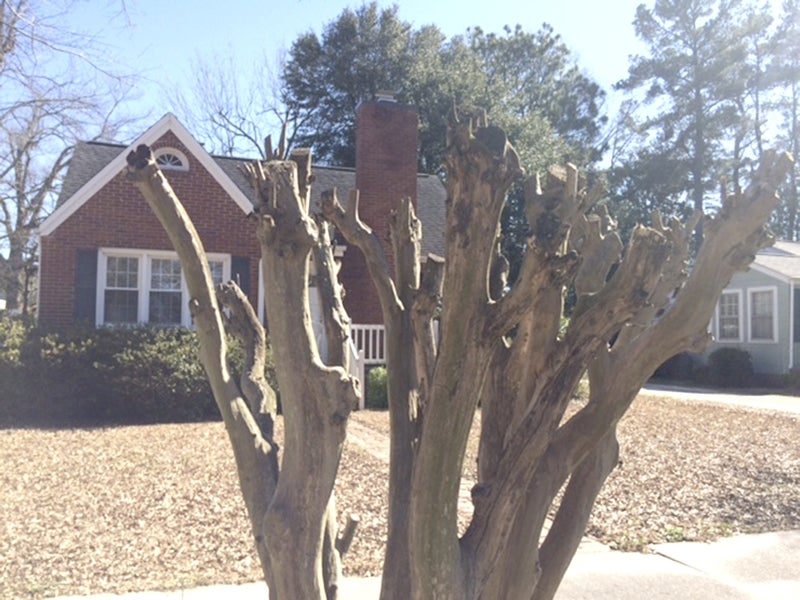When should I top my trees? Never
Published 12:00 am Friday, February 17, 2017

- Submitted photo Some experts call this extreme pruning 'crape murder.'
By Amy-Lynn Albertson
Rowan County Extension Director
Q.: When should I top my trees? My neighbor already had his done.
A: Nothing makes a horticulture agent cringe more than the horrible, no-good, very bad practice of topping trees. Please don’t do this to your trees, pretty please. When I ask people why they topped their trees their answers are usually either: “It was too big and I was afraid it would fall on my house” or “Aren’t you supposed to do it? Everyone else in our neighborhood is doing it.”
Tree topping is never a justifiable pruning practice. It increases tree health problems and is aesthetically unappealing. It’s been found that topping trees causes sun damage, insect attack, nutrient stress and decay. Also, did I mention topped trees are ugly?
After you top a tree many epicormic shoots arise and develop into weakly formed branches. These branches and the multiple leaders will get bigger and have a greater potential to fall and cause damage. A topped tree will require constant maintenance and has increased the potential to become hazardous. It’s important to think about the mature size of a tree and where it will grow in relation to power lines and other structures before you plant.
Pruning can actually be done at any time of the year; however, recommended times vary with different plants. Contrary to popular belief, pruning at the wrong time of the year does not kill plants or cause them to bleed to death. Do not prune when it’s most convenient for you, but rather when it results in the least damage to the plant.
In general, the best time to prune most plants is during late winter or early spring before growth begins. There are a few exceptions to this rule which is plants that bloom in spring, such as dogwood, saucer magnolia, Japanese cherries.
These plants should be pruned after they finish blooming. Try not to prune very much in late summer as new growth may be encouraged on some plants. This growth won’t have enough time to harden off before cold weather arrives. You should always prune plants damaged by storms or ones with dead limbs as soon as possible to avoid insect and disease problems that may develop.
To learn more about proper tree selection, planting, care and pruning attend the Tree Care Workshop on March 4 at Horizons Unlimited. The workshop is free and open to the public from 10 a.m.-noon. Please register by calling 704-216-8970 or online at http://go.ncsu.edu/rowantreeeworkshop. Experts from N.C. State University, city of Salisbury and the North Carolina Forest Service will provide hands-on demonstration and information.



